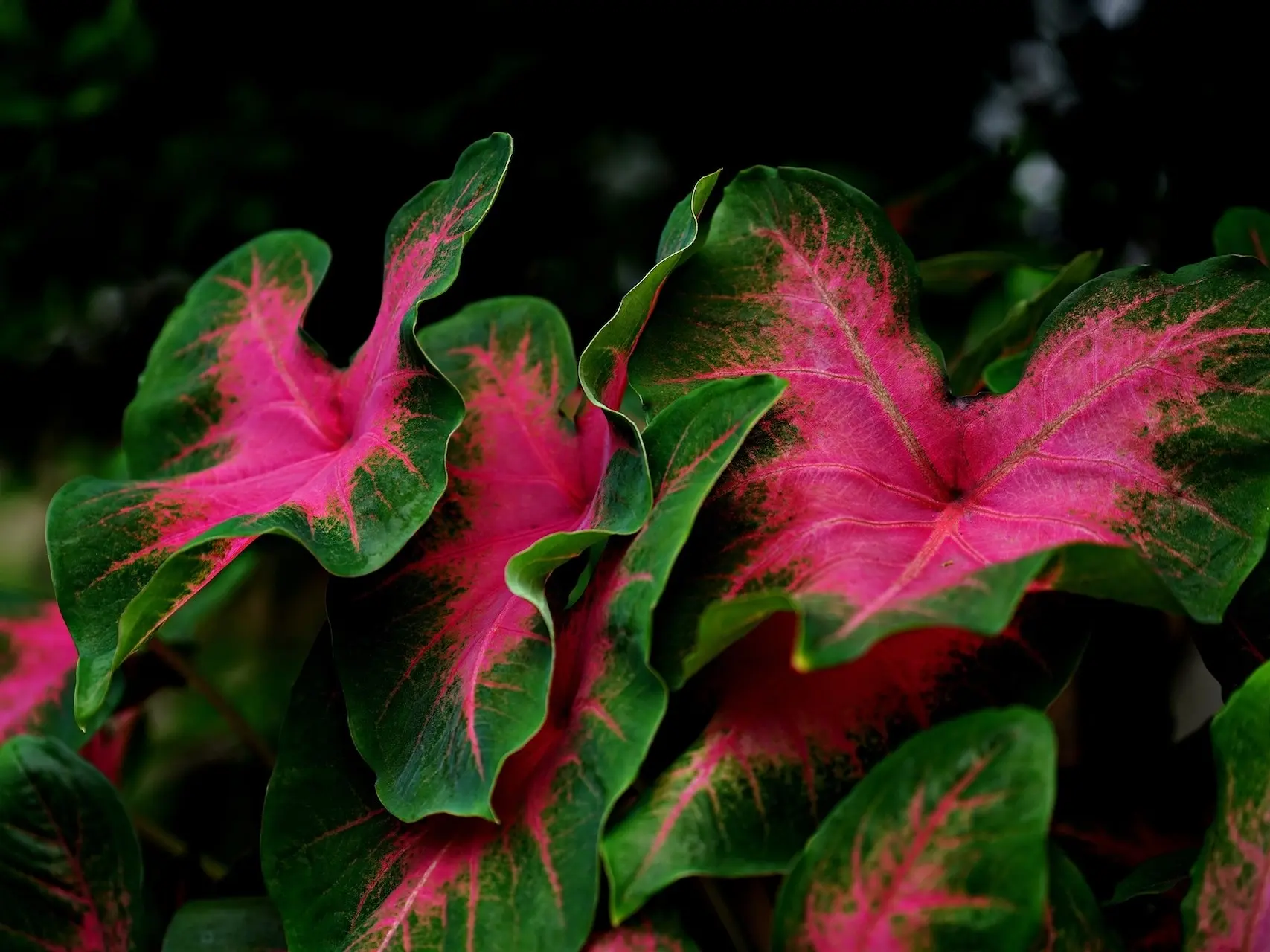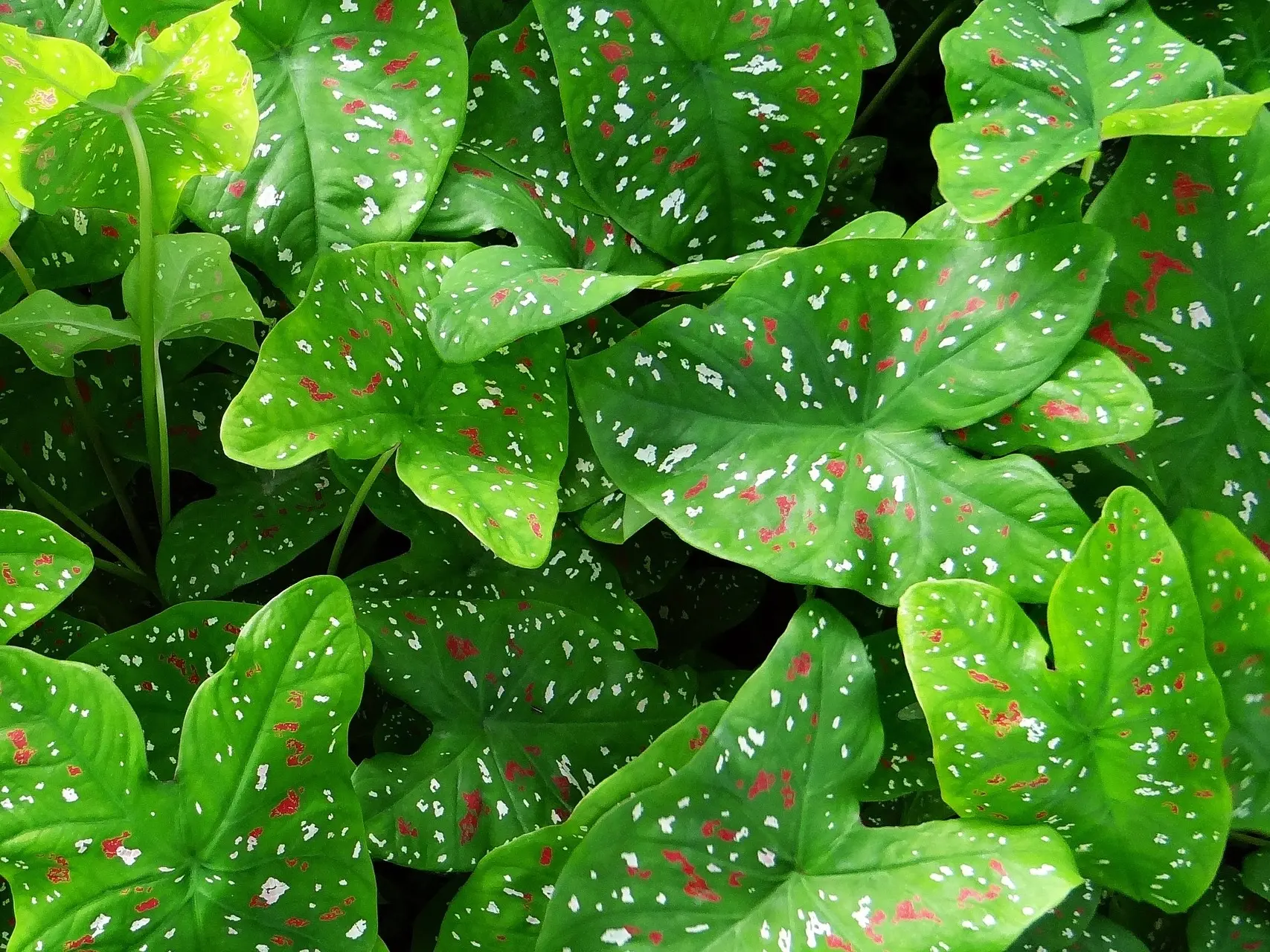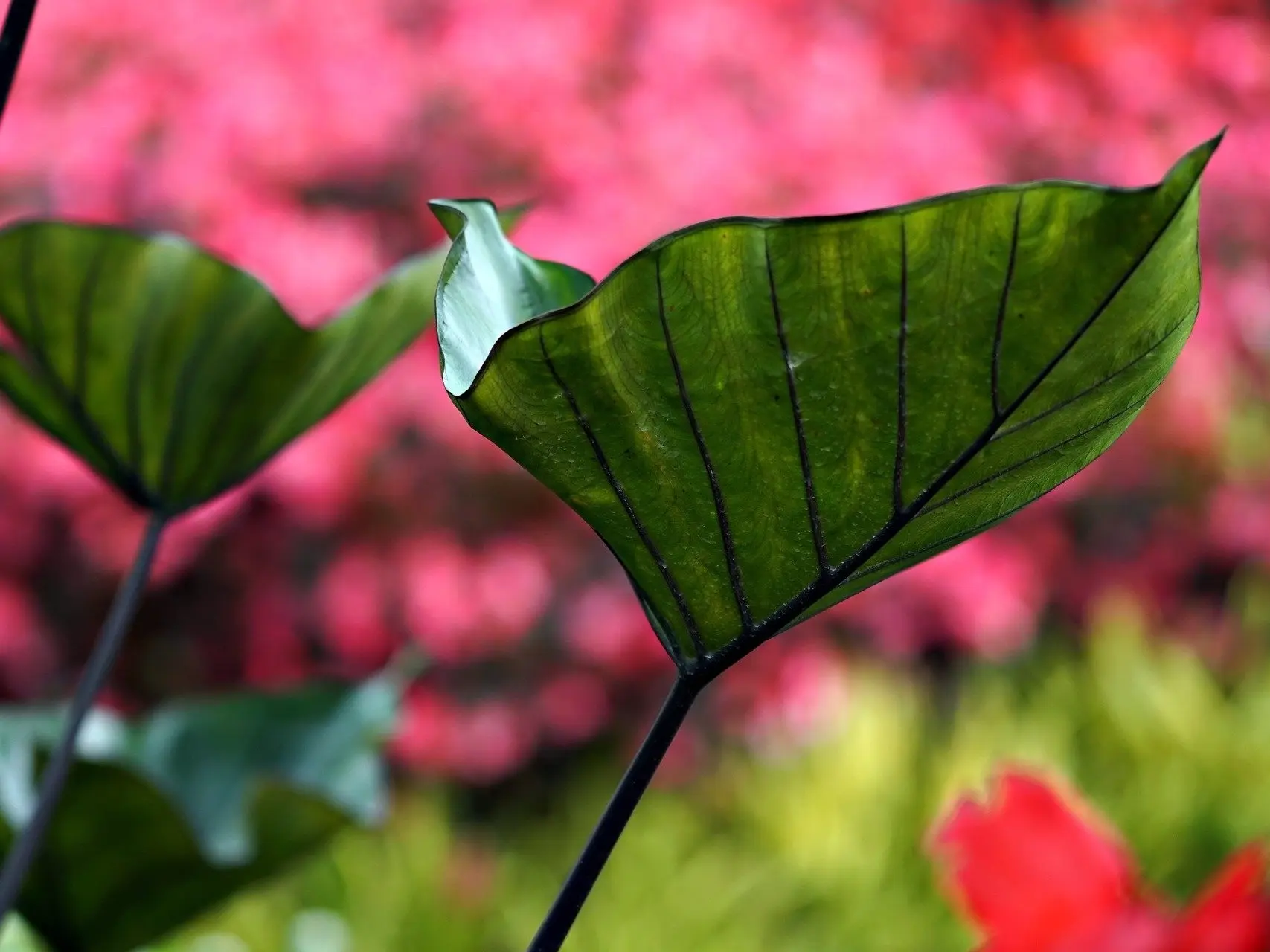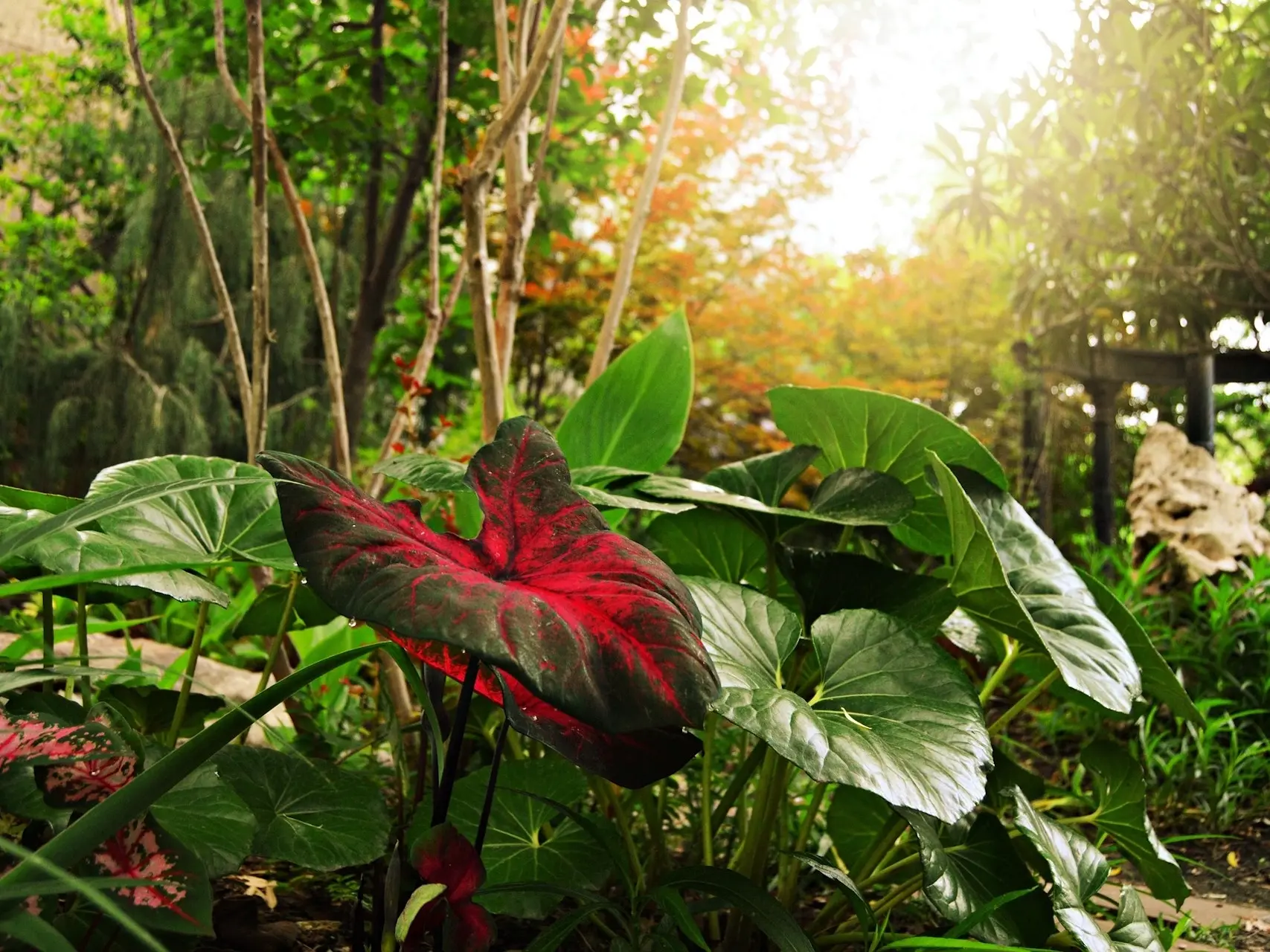A | B | C | D | E | F | G | H | I | J | K | L | M | N | O | P | Q | R | S | T | U | V | W | X | Y | Z

Name
Caladium
Description
Tuberous perennial herb. Leaves grow alternately and are arrow shaped, variegated and brightly colored. Flowers grow in a spadix surrounded by a spathe.

Concern Level
Only during drought conditions, unpalatable. Generally used as an ornamental plant.
Toxic Parts
All parts of the plant are toxic, highest concentration in the leaves.

Symptoms
Burning and irritation of the lips, mouth and tongue, gastrointestinal distress, diarrhea. Physical contact with the sap can create irritation on the skin.
Danger
Contains calcium oxalate crystals.

More information
*It should be noted that we are not veterinarians. This information is written specifically for horses and should be used for reference purposes only. If you think your horse has eaten something toxic call your vet right away.